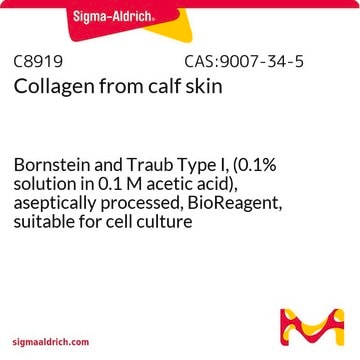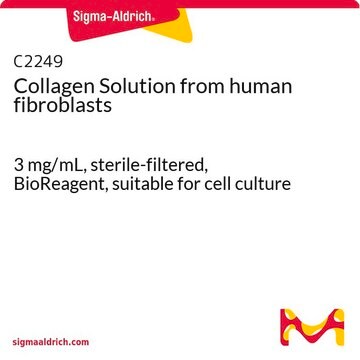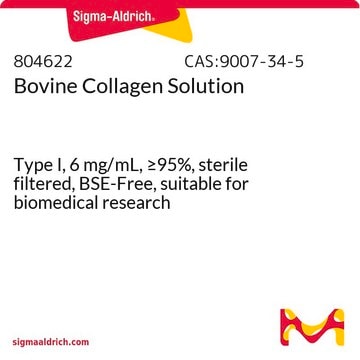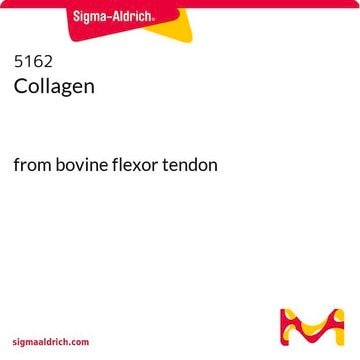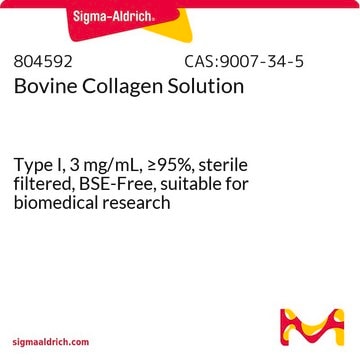Here are our preparation instructions:
This product is prepared from rat tail tendons by modification of a published procedure.
It is supplied as an aqueous solution in 20 mM acetic acid (~100 mg of protein per vial). Protein concentration was estimated by the biuret method.
The vial contains approximately 100 mg of protein. Volume per vial: 22–25 ml. The product ships on wet ice and storage at 2–8 °C is recommended. During shipment, or if the storage temperature for this product goes slightly below the recommended range, the product may acquire a gel-like appearance. Under such circumstances, it is possible to warm the product gently, to no more than 45 °C, in order to reconstitute the product fully, before use. Aliquots that have been diluted to a working concentration may be stored at 2–8 °C for up to 2 weeks. Do not freeze. Optimal conditions for attachment must be determined for each cell line and application.
1. An appropriate volume of the collagen solution should be diluted to a working concentration of 0.01% using sterile, tissue culture grade water.
2. Coat dishes with 6-10 mg/cm2. Allow the protein to bind for several hours at room temperature or 37 °C, or overnight at 2–8 °C.
3. Remove excess fluid from the coated surface and allow it to dry overnight. If sterility has been compromised, the dried, coated surface can be sterilized easily by overnight exposure to UV light in a sterile tissue culture hood.
4. Rinse with sterile tissue culture grade water or a balanced salt solution before introducing cells and medium.






